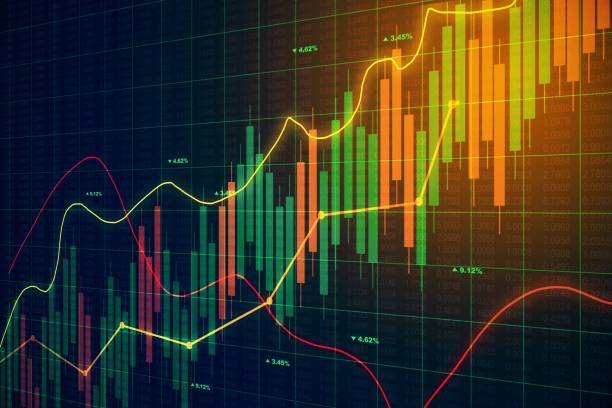Have the Best Trading Tools

Key Indicators and Tools for Successful Trading
Forex Indicators
Trend Indicators
Help determine the market’s direction, whether it’s trending upward, downward, or moving sideways.
Momentum Indicators
Measure the strength and speed of price movements, signaling potential reversals or trend continuations.
Volatility Indicators
Gauge the extent of price fluctuations, helping traders anticipate market activity and risk levels.
Volume Indicators
Show the level of market participation by tracking the number of trades, revealing buying or selling pressure.
The Moving Average (MA) is a trend indicator that smooths out price data over a specific period to reveal the overall market direction.
There are two main types: the Simple Moving Average (SMA), which calculates the average of closing prices over a set number of periods, and the Exponential Moving Average (EMA), which gives more weight to recent prices, making it more responsive to current market conditions.
The Relative Strength Index (RSI) is a momentum indicator that evaluates the speed and magnitude of recent price changes to assess whether a currency is overbought or oversold.
The RSI scale ranges from 0 to 100, providing traders with key insights into market conditions.
When the RSI exceeds 70, it indicates an overbought condition, suggesting a potential reversal or market correction may be imminent.
Conversely, an RSI reading below 30 signals an oversold condition, presenting a possible buying opportunity as the price may be undervalued. This tool helps traders make informed decisions based on market momentum.
Bollinger Bands are a volatility indicator that consists of a moving average combined with two standard deviation lines positioned above and below it.
This setup enables traders to assess market volatility and identify potential price breakouts. When the bands narrow, it indicates low volatility, often signaling an impending breakout, as price movement may be constrained before a significant shift occurs.
Conversely, when the price touches the upper band, it suggests that the market may be overbought, while touching the lower band indicates potential oversold conditions. This makes Bollinger Bands a valuable tool for traders looking to anticipate price movements..
The Moving Average Convergence Divergence (MACD) is both a trend and momentum indicator that measures the difference between two Exponential Moving Averages (EMAs), typically the 12-day
Fibonacci Retracement is a popular tool used to identify potential support and resistance levels by drawing horizontal lines between a significant high and low on a price chart.
The key retracement levels—23.6%, 38.2%, 50%, and 61.8%—highlight areas where the price might pause or reverse during a pullback.
Traders use these levels to predict potential reversal points within an ongoing trend, helping them decide when to enter or exit trades. Fibonacci retracement is particularly useful in determining entry points after corrections in both uptrends and downtrends.
The Average True Range (ATR) is a volatility indicator that measures the average difference between a market’s high and low prices over a given period.
A rising ATR indicates increased volatility, signaling traders to expect larger price movements, which is useful for adjusting stop-loss levels to avoid premature exits. In contrast, a lower ATR suggests reduced volatility, which is typical in range-bound markets.
Traders often rely on ATR to fine-tune their risk management and position sizing, as it helps align trade parameters with current market conditions.
The Stochastic Oscillator is a momentum indicator that compares a currency’s closing price to its price range over a defined period, helping traders assess potential trend reversals.
It ranges between 0 and 100, with values above 80 indicating overbought conditions, suggesting a possible reversal or correction. Conversely, values below 20 signal oversold conditions, hinting at a potential buying opportunity.
This tool is often used to time entries and exits, especially when combined with other indicators to confirm signals in trending or range-bound markets.
How to Combine Indicators for Better Results
- Trend + Momentum Indicators: Use Moving Averages (trend) with RSI (momentum) to confirm trends and entry points.
- Volatility + Trend Indicators: Combine ATR with Bollinger Bands to assess market conditions and set stop-loss levels.
- Support and Resistance Tools: Use Fibonacci Retracement alongside MACD to identify reversal points
Forex indicators and tools play a crucial role in developing effective trading strategies.
By understanding how to use trend, momentum, volatility, and volume indicators, traders can gain valuable insights and improve decision-making.
Combining these tools with sound risk management practices will help you trade more confidently and achieve long-term success.

